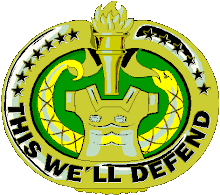More Proven Ties Between Iraq and al-Qaeda
What the 9/11 Commission says about Iraq and al Qaeda.
"Other intelligence sources said that some Taliban leaders, though not Mullah Omar, had urged Bin Ladin to go to Iraq. If Bin Ladin actually moved to Iraq, wrote Clarke, his network would be at Saddam Hussein's service, and it would be "virtually impossible" to find him. Better to get Bin Ladin in Afghanistan, Clarke declared...National-security adviser Sandy Berger suggested that the U.S. send just one U-2 flight, but the report says Clarke worried that even then, Pakistan's intelligence service would warn bin Laden that the U.S. was preparing for a bombing campaign. "Armed with that knowledge, old wily Usama will likely boogie to Baghdad," Clarke wrote in a February 11, 1999 e-mail to Berger. The report says that another National Security Council staffer also warned that "Saddam Hussein wanted bin Laden in Baghdad." (SEE MORE)
“Hudayfa Azzam, the son of bin Laden's longtime mentor Abdullah Azzam, told Agence France Presse that the Iraqi regime worked closely with al Qaeda in Iraq before the war. "Saddam Hussein's regime welcomed them with open arms and young al Qaeda members entered Iraq in large numbers, setting up an organization to confront the occupation," he said in an interview published 8/29/2004. Azzam added that al Qaeda fighters "infiltrated into Iraq with the help of Kurdish mujahideen from Afghanistan, across mountains in Iran" and that once they arrived, Saddam "strictly and directly" controlled their activities.” (SEE MORE)
"At the head of the group was a man by the name of Farouk Hijazi, President Saddam Hussein's new ambassador to Turkey and one of Iraq's most senior intelligence officers. He had been sent on one of the most important assignments of his career - to recruit Osama bin Laden." (SEE MORE)
"After Abdul Rahman Yasin returned to Baghdad, New Jersey FBI regularly brought Musab Yasin to its office to call his brother in Iraq. Abdul Rahman would always say that he would return to the US to answer the FBI's questions, only he had some business to finish up first. As Fox [New York City's FBI Chief Jim Fox] remarked, even after Abdul Rahman had successfully fled, he continued to fool some FBI agents. In August, Yasin was indicted, charged with helping to mix chemicals for the bomb [used in the first World Trade Center bombing]. In the spring of 1994, a Jordanian stringer working for ABC News spotted Abdul Rahman Yasin outside his father's house in Baghdad and learned from neighbors that he worked for the Iraqi government. After that news was broadcast, Iraqi authorities took Yasin and the other men in the house to an unknown location. His sixty-five-year-old mother, ill with cancer, was allowed to visit them, until she died in October 1994, in a hospital run by Iraqi security. As recently as May 1998, FBI director Louis Freeh affirmed that Yasin was in Iraq." (SEE MORE)
"A day later, Saddam told visiting Tunisian Foreign Minister Habib ben Yahya, "America brought the hatred of the world upon itself." For his part, Uday flat-out praised the 9/11 attacks, saying, "These were courageous operations carried out by young Arabs and Muslims," according to quotes picked up by the Saudi daily Asharq al-Awsat. (SEE MORE)
"On Aug 3, 1998, UNSCOM chairman Richard Butler arrived in Baghdad. The Iraqis demanded that he declare Iraq in compliance or leave immediately. Mr. Butler departed the next day. The following day, Aug. 5, Baghdad declared "suspension day"--that is, the suspension of weapons inspections. It restated its previous threats, affirming, "To those against whom war is made, permission is given to fight." Two days later, the U.S. embassies in Kenya and Tanzania were bombed simultaneously." (SEE MORE)
"While in Baghdad, Abu Nidal, whose real name was Sabri al-Banna, came under pressure from Saddam to help train groups of al-Qa'eda fighters who moved to northern Iraq after fleeing Afghanistan. Saddam also wanted Abu Nidal to carry out attacks against the US and its allies.....There are al-Qa'eda in a number of locations in Iraq," he said. "In a vicious, repressive dictatorship that exercises near total control over its population, it's very hard to imagine that the government is not aware of what is taking place in the country." (SEE MORE)
"Iraq had been on the State Department's list of state sponsors of terror for more than a decade...Saddam Hussein boasted openly about funding Palestinian suicide bombers. The bipartisan Senate Intelligence Committee report, that panel member John Edwards approved, confirmed this state sponsorship. His regime gave safe haven to notorious terrorists Abu Abbas and Abu Nidal, and welcomed home Abdul Rahman Yasin, an Iraqi who admitted on national television in the United States to mixing the chemicals for the first World Trade Center bombing. And the CIA assessed, again according to the Senate Intelligence Committee report, that Iraq had actually increased its terrorist plotting against the United States "throughout 2002."" (SEE MORE)
"The Philippine government expelled Hisham al Hussein, the second secretary at Iraq's Manila embassy, on February 13, 2003. Cell-phone records indicate that the diplomat had spoken with Abu Madja and Hamsiraji Sali, leaders of Abu Sayyaf, just before and just after this al Qaeda-allied Islamic militant group conducted an attack in Zamboanga City. Abu Sayyaf's nail-filled bomb exploded on October 2, 2002, injuring 23 individuals and killing two Filipinos and U.S. Special Forces Sergeant First Class Mark Wayne Jackson, age 40." (SEE MORE)



1 Comments:
Might as well give up on this. You could have a picture of Saddam and bin Laden together in the same room with models of the WTC, time stamped 9/10/01 and Saddam handing bin Laden a huge wad of cash and Liberals still wouldn't believe it.
Post a Comment
<< Home